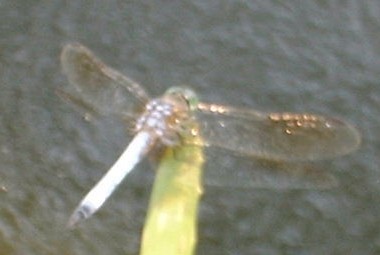|
Gardens Ablaze |
||
|
|
Dragonflies in the Garden
|
|
|
Related Topics Site Map
Home
|
Dragonflies have been around for a long time, and in fact were one of the first insects to appear on earth. In prehistoric times, they were huge, measuring over 2 feet long, but other than shrinking in size over time, their looks and function haven't changed much. Dragonflies are closely related to damselflies, which are smaller and which hold their wings above their bodies while resting (whereas the dragonfly holds his wings spread while resting). Most dragonflies need sunlight to fly, and will land even if the sun goes behind a cloud only very briefly. There are about 500 species in North America. They have legs, mainly for clinging and climbing, but they never actually walk. In the air, they can dive like an airplane or hover like a helicopter. They are very quick and often zero in and catch prey in mid-air. Dragonflies are water creatures for the first part of their lives, living in the water for the first 1-3 years, depending on their type and size. They are carnivores and will eat anything they can find, including mosquito larvae, small water creatures, and even each other. The process of morphing into an adult dragonfly is fascinating, with the nymph climbing from the water, his armor splitting, and his crumpled wings emerging and hardening in the sunlight. He finally flies off, leaving a brown translucent shell behind. Adult dragonflies have a short life span, living only long enough to fully mature and mate. They die when the cold of winter sets in and will be replaced by their offspring the next season. Adult dragonflies eat many of the most annoying garden pests, and as such, are a very welcome addition to the garden. The list of delicacies that they enjoy includes mosquitoes, flies, gnats, and aphids. Even if you don't have a garden pond, a shallow pan of water or a birdbath should be enough to attract dragonflies to your yard, and no garden big or small should be without them!
Custom Search
|
|
|
Gardens Ablaze |
||
 The
world of beneficial insects is filled with interesting and odd-looking entities,
but the exotic jewel-colored dragonfly stands apart as one of the most fascinating.
The
world of beneficial insects is filled with interesting and odd-looking entities,
but the exotic jewel-colored dragonfly stands apart as one of the most fascinating.